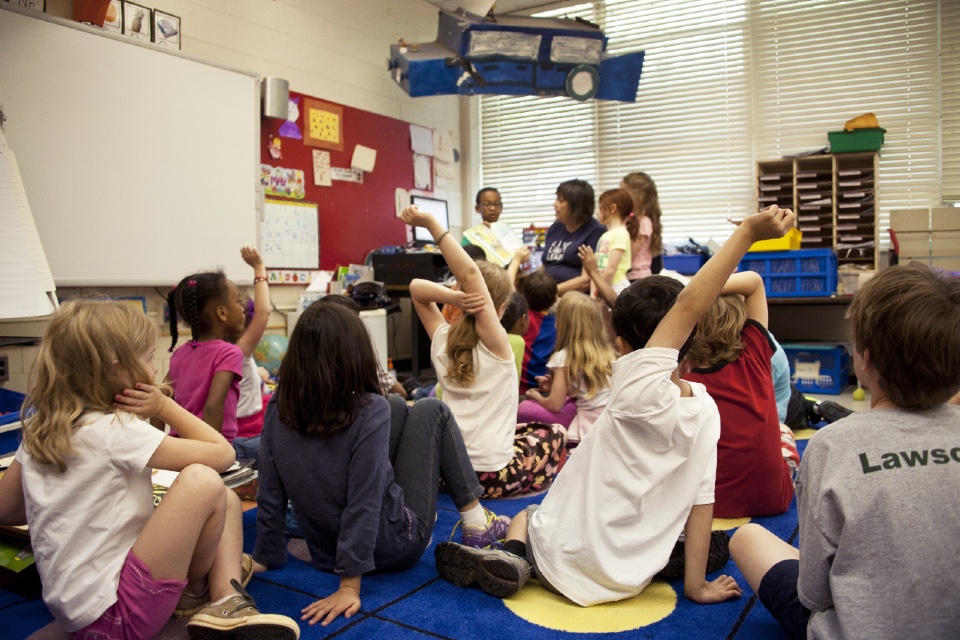Over half of teachers warn poor air quality is negatively impacting performance, as students prepare for mock exams
According to a recent survey, over three-quarters (77%) of teachers said poor air quality in their schools affected students’ ability to concentrate, which could lead to underperformance in upcoming mock exams.
Students’ grades in these exams can determine school and university admissions, but classroom conditions could seriously harm them. More than half (55%) of the teachers surveyed noticed a negative impact on grades and performance when air quality is poor.
The Air Quality in UK Classrooms Report – conducted by experts in air movement and ventilation solutions Airflow – asked teachers at 133 UK schools for insights into working and learning conditions at UK schools.
The findings show that almost three in four (72%) classrooms suffer from air quality that is ‘below standard’. Nearly three in five teachers (59%) deemed a classroom with poor air quality to be ‘not fit for purpose’ – for either teachers or pupils.
Some 91% of teachers agreed that poor air quality had a negative impact on students’ health, behaviour or ability to work. This rose to 96% in London. While 6 in 10 teachers (61%) have seen pupils’ health being affected – by worsening asthma or other lung conditions.
In response to the report, the Building Engineering Services Association (BESA) has described the state of indoor air quality (IAQ) in UK classrooms as a ‘national scandal’.
What improvements do teachers want to see?
The study highlights that teachers are aware of air quality issues and have often raised concerns. However, 31% of teachers at schools with ‘below standard’ air quality reported that despite requesting improvements, no action has been taken.
More than a quarter (27%) said their school is trying to improve air quality, but cannot due to a lack of funding or government support. Teachers also identified the changes they’d want schools to make if funding was available:
-
Replace old heating appliances (which can contribute to indoor air pollution) – 72% of teachers
-
Install air filtration or purification systems – 71%
-
Ban cars on streets with schools during school run times – 38%
-
Relocate playgrounds and classroom windows away from roads – 32%
With school holidays around the corner, now could be the perfect time for schools to implement such changes and improve student welfare.
Alan Siggins, managing director of Airflow Developments, said: “We all know how much hinges on the outcomes of exams, so classroom conditions need to be as conducive to learning as possible. But this study reveals that conditions are far from ideal in many schools.
“Poor air quality can obviously lead to health problems and absences. Yet, even when students are in school, substandard air quality can mean pupils find it tough to concentrate and commit what they’re learning to memory – crucial skills for exam preparation.
“Improving air quality is our area of expertise and we know the solutions available to overcome these problems. However, significant investment is required and there must be support from the upper reaches of government for that to happen. We hope this report will act as a wake-up call for people who can sanction funding.”
Mrs. X, who works at a London primary school but did not want to be named for job security reasons, said: “Returning to school after the pandemic, all schools were advised to keep windows open to improve air quality. However, in winter, the classrooms would obviously get very cold. Children would be distracted and this impacted learning.
“Even with windows open, pollution around the school area means that air quality is not drastically improved. We know that poor air quality and ventilation lead to higher levels of CO2 in the classroom, which affects cognitive performance (reduces memory, impairs concentration, lowers decision-making abilities) and inhibits learning.
“In addition, children who struggle with self-regulation find it particularly hard to be in poorly-ventilated environments and may demonstrate disruptive behaviour, leading to them being sent out of the classroom, meaning they are not learning from their teacher.”
Nicola D’Urso, school speech and language therapist, said: “Some schools I work in have indoor areas which are poorly ventilated without any windows. I’ve seen examples of children fainting and disengaging due to dehydration in excessively hot and stuffy classrooms. It’s not uncommon for children to become drowsy and even the brightest students can stop interacting in lessons. I notice caring and responsible teachers often having to prioritise children’s health and wellbeing during lessons instead of teaching them the educational content.
“The main obstacle is that senior leadership teams in schools are at the mercy of their local council’s policy on clean air and limiting air pollution. The roadblock for schools is that it’s a bit out of their hands given that it’s up to the council and the government to get a grasp of air pollution and put adequate policies in place.”






Leave a Reply